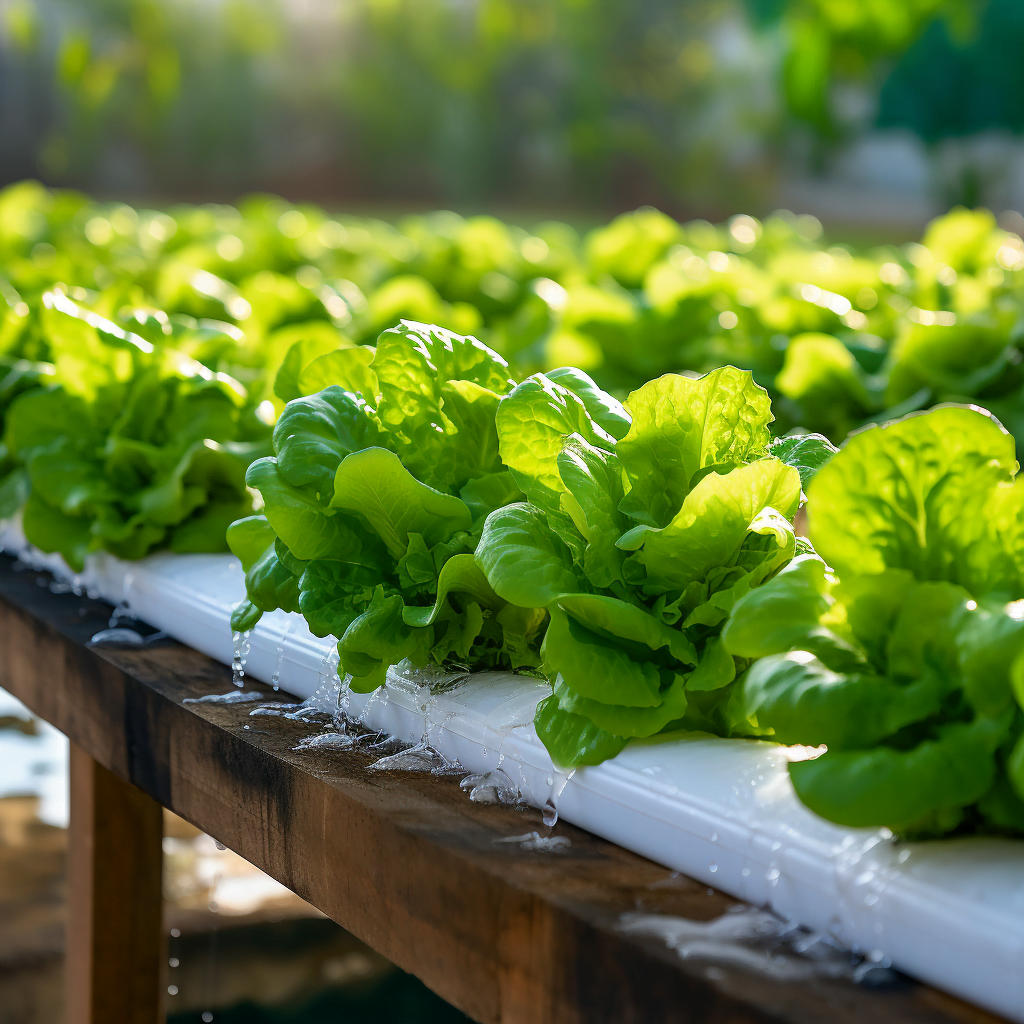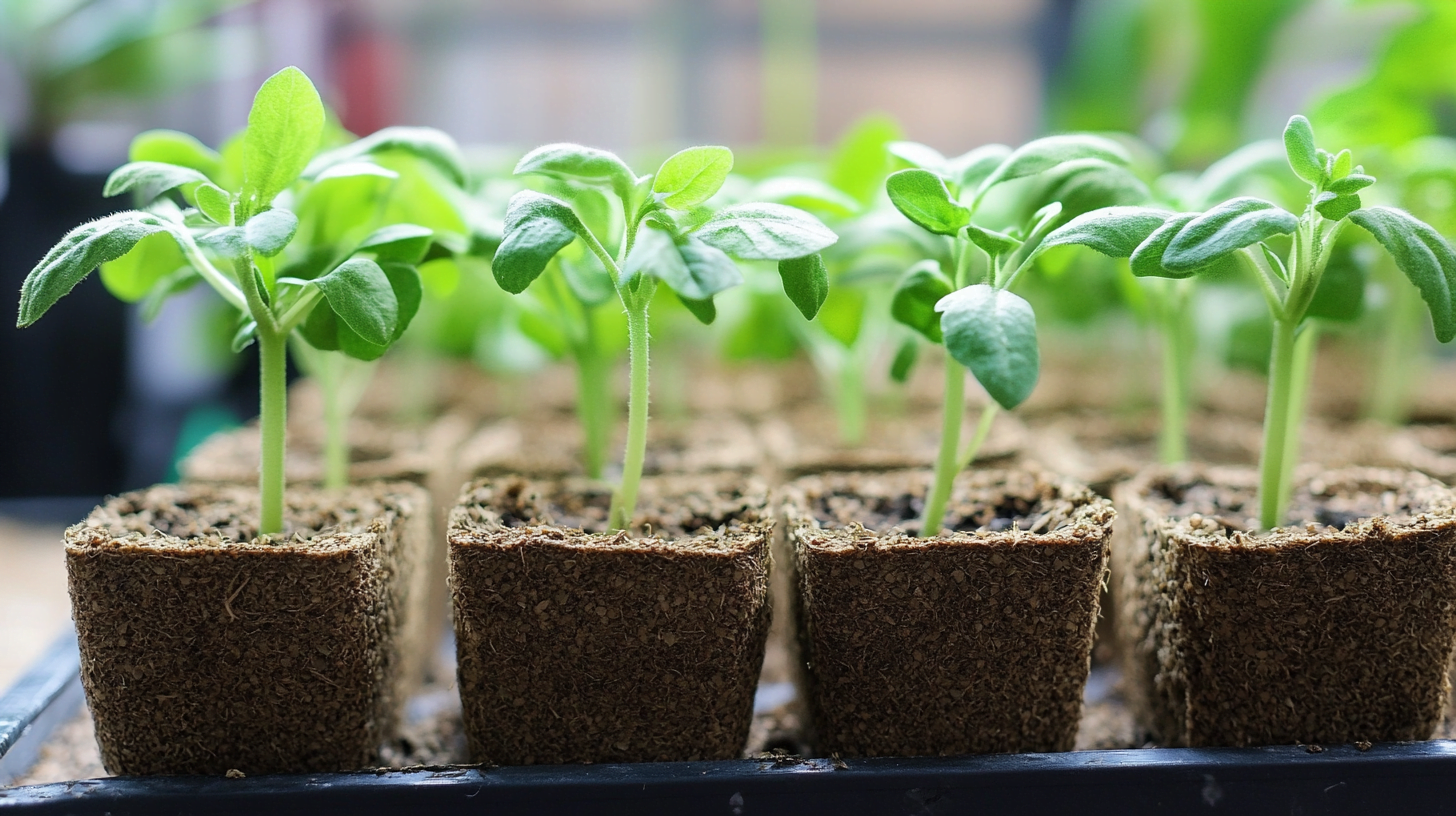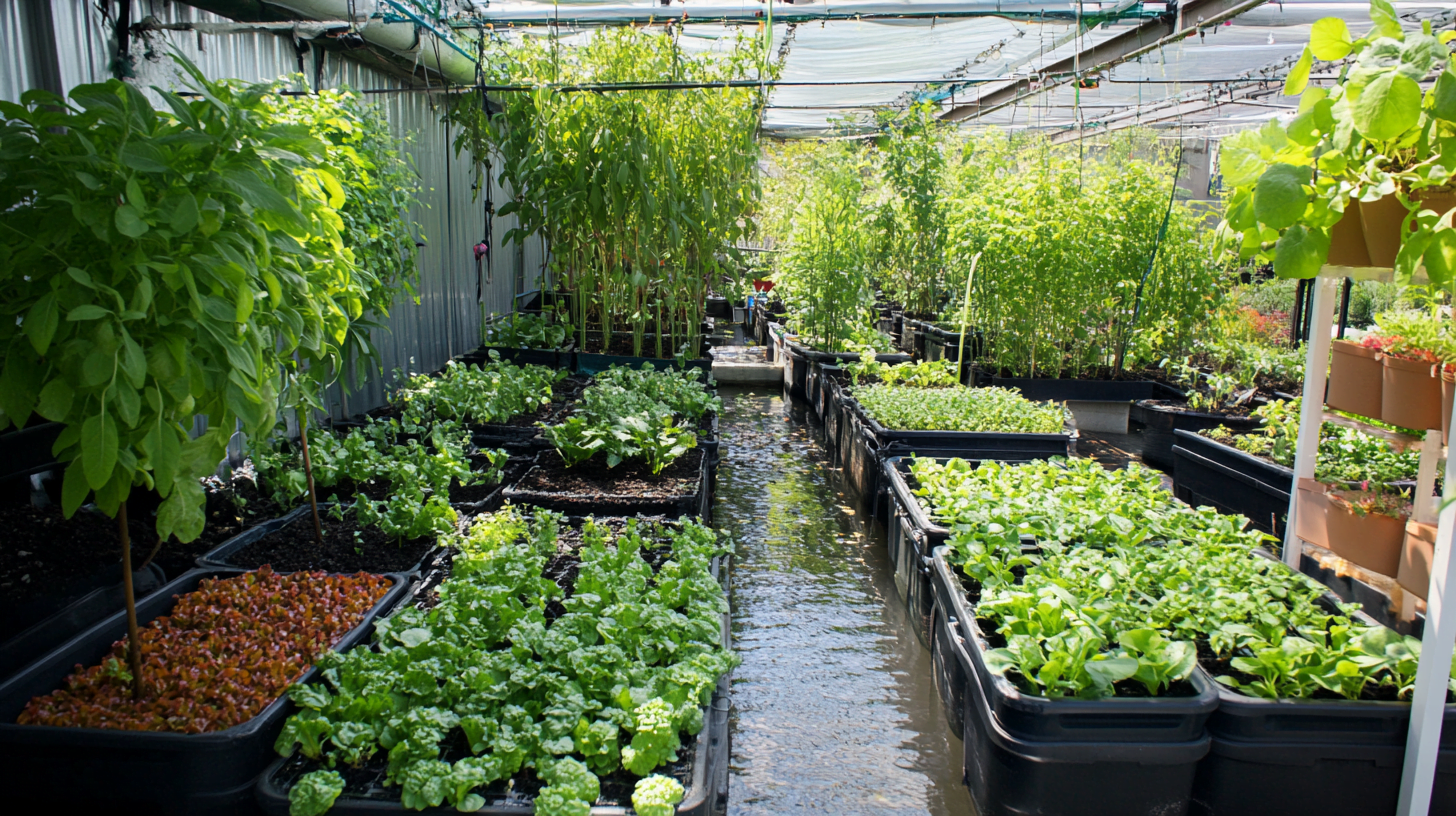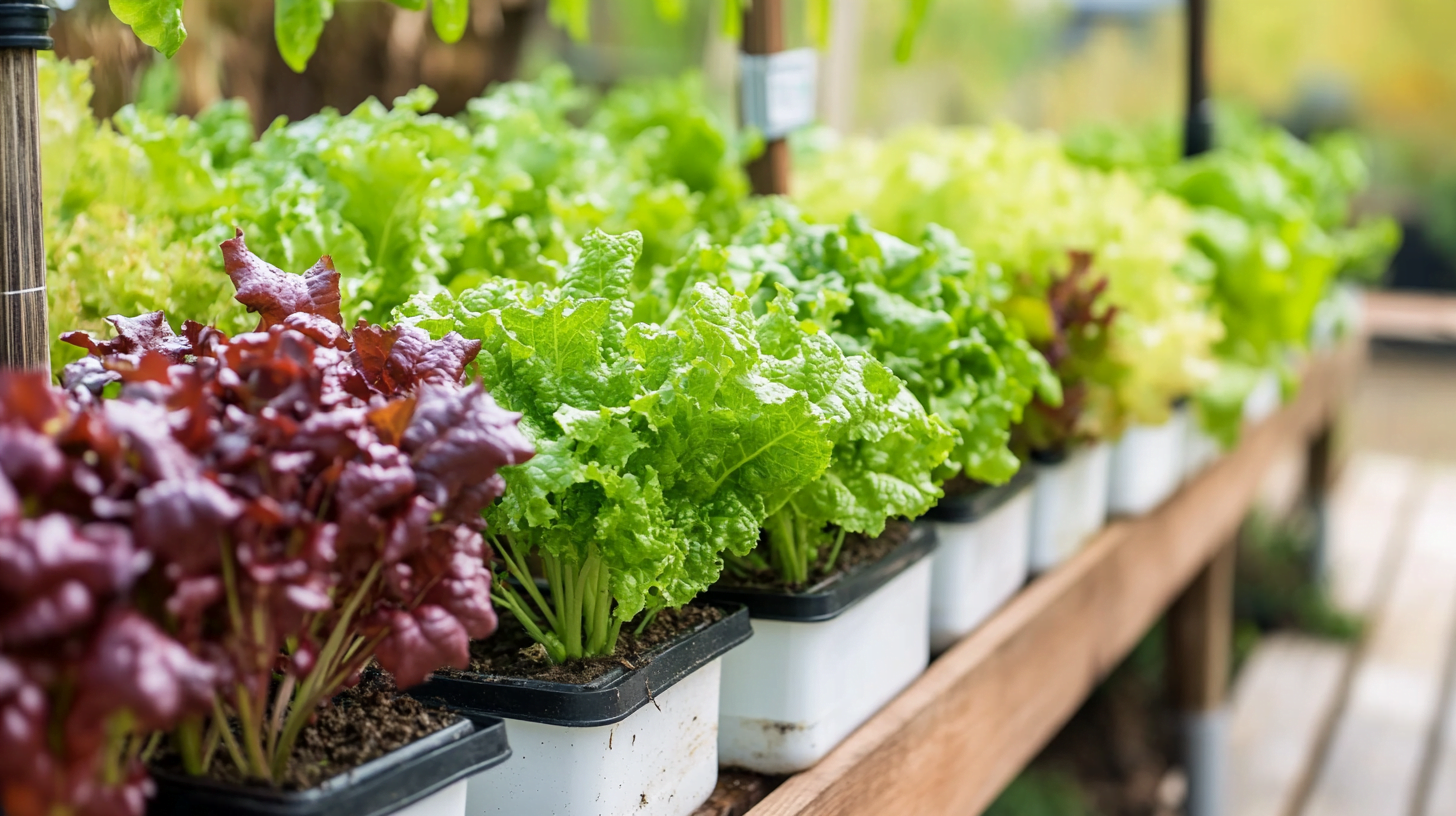Are you interested in starting your own hydroponic garden? This innovative method of gardening allows you to grow plants without soil, often leading to faster growth, higher yields, and less water usage. In this comprehensive guide “How to Start Hydroponic Gardening“, we’ll cover everything you need to know to get started with your own hydroponic system.
Understanding Hydroponic Gardening
What is Hydroponic Gardening?
Hydroponic gardening is a method of growing plants without soil. Instead, plants are grown in a grow medium and fed with a nutrient solution. This method allows plants to receive nutrients directly from the solution, resulting in faster growth and higher yields. Hydroponic gardening can be done indoors, making it a popular choice for urban gardeners and those with limited outdoor space.
Benefits of Hydroponic Gardening
There are several benefits to hydroponic gardening:
- Space efficiency: Hydroponic systems can be set up in small spaces, making them ideal for apartment dwellers or those with limited outdoor space. With vertical hydroponic systems, you can maximize your growing area by stacking plants vertically.
- Water conservation: Hydroponic systems use less water than traditional soil gardening because water is recirculated rather than lost through soil. This is especially important in areas with water scarcity or where water bills can be high.
- Faster growth: Because plants receive nutrients directly from the nutrient solution, they often grow faster than plants grown in soil. This means you can enjoy fresh produce in a shorter amount of time.
Types of Hydroponic Systems
There are several types of hydroponic systems, each with its own advantages and disadvantages. Here are a few of the most common:
- Wick System: This is a passive system, meaning it doesn’t require an air pump or airstone. The nutrient solution is drawn up into the grow medium via a wick. It is simple to set up and suitable for small-scale gardening.
- Water Culture: Also known as a Deep Water Culture (DWC) system, this involves suspending plants in a nutrient solution with an airstone to provide oxygen to the roots. It is an inexpensive and beginner-friendly system.
- Ebb and Flow: This system floods the grow bed with a nutrient solution at specific intervals and then drains it back into a reservoir. It is versatile and can be used for a wide range of plants.
- Drip System: In this system, a pump delivers a nutrient solution to each plant through a network of tubes. It allows for precise control over the nutrient delivery and is commonly used in commercial hydroponic operations.
- Nutrient Film Technique (NFT): In NFT systems, a thin film of nutrient solution is pumped over the roots of plants suspended in a sloped trough. It provides constant access to oxygen and nutrients and is ideal for fast-growing plants.
- Aeroponic System: This is the most high-tech type of hydroponic system. Plants are suspended in air and misted with a nutrient solution. It allows for maximum oxygenation of the roots and can result in exceptionally fast growth.
Each system has its own set of requirements and considerations, so it’s important to research and choose the one that best suits your needs and resources.
Getting Started with Hydroponic Gardening
| Component | Description | Examples or Specifications |
|---|---|---|
| Hydroponic System | The structure providing the plant’s water and nutrient support | Ebb and Flow, NFT, Deep Water Culture, Aeroponics |
| Grow Medium | Soilless material supporting the plant’s roots | Rockwool, Coconut Coir, Perlite, Vermiculite, Expanded Clay Pebbles |
| Nutrient Solution | Water mixed with essential nutrients | High in Nitrogen, Phosphorous, Potassium; Specific formulations for growth stages |
| pH Control | Essential for nutrient absorption | pH range of 5.5 – 6.5, pH meters, pH up/down solutions |
| Grow Light | Provides necessary light spectrum | Full-spectrum LED, Fluorescent, HPS; Varying wattages |
| Seed Choices | Types of plants suitable for hydroponic systems | Leafy greens, Herbs, Small fruiting plants |
| Maintenance Considerations | Regular tasks to ensure system functionality | Checking pH, nutrient levels, light schedules, cleaning systems |
| Common Issues | Problems that might be encountered | Algae growth, Nutrient burn, Pest infestations, Root rot |
| System Types | Based on space and resource optimization | Vertical systems, Large-scale setups, Home DIY systems |
Choosing Plants And Starting Your Seeds
When deciding what type of plants to grow, consider starting with leafy greens like lettuce, spinach, or kale. These are ideal for beginners because they have a short germination period and grow quickly. Other popular choices for hydroponic gardening include herbs like basil, mint, and cilantro, as well as small fruiting plants like cherry tomatoes and strawberries.
To start your seeds, you can use rapid rooter cubes, which are designed to retain the right amount of moisture for optimal seed germination. Simply place the seeds in the pre-made holes of the cubes and keep them moist until they sprout. You can also use rockwool cubes or coconut coir pellets as alternatives to rapid rooter cubes.
It’s important to provide the right conditions for germination, including a warm and humid environment. Using a heat mat under your seed trays can help maintain the ideal temperature for germination. Once the seeds have sprouted, you can move them to your hydroponic system.
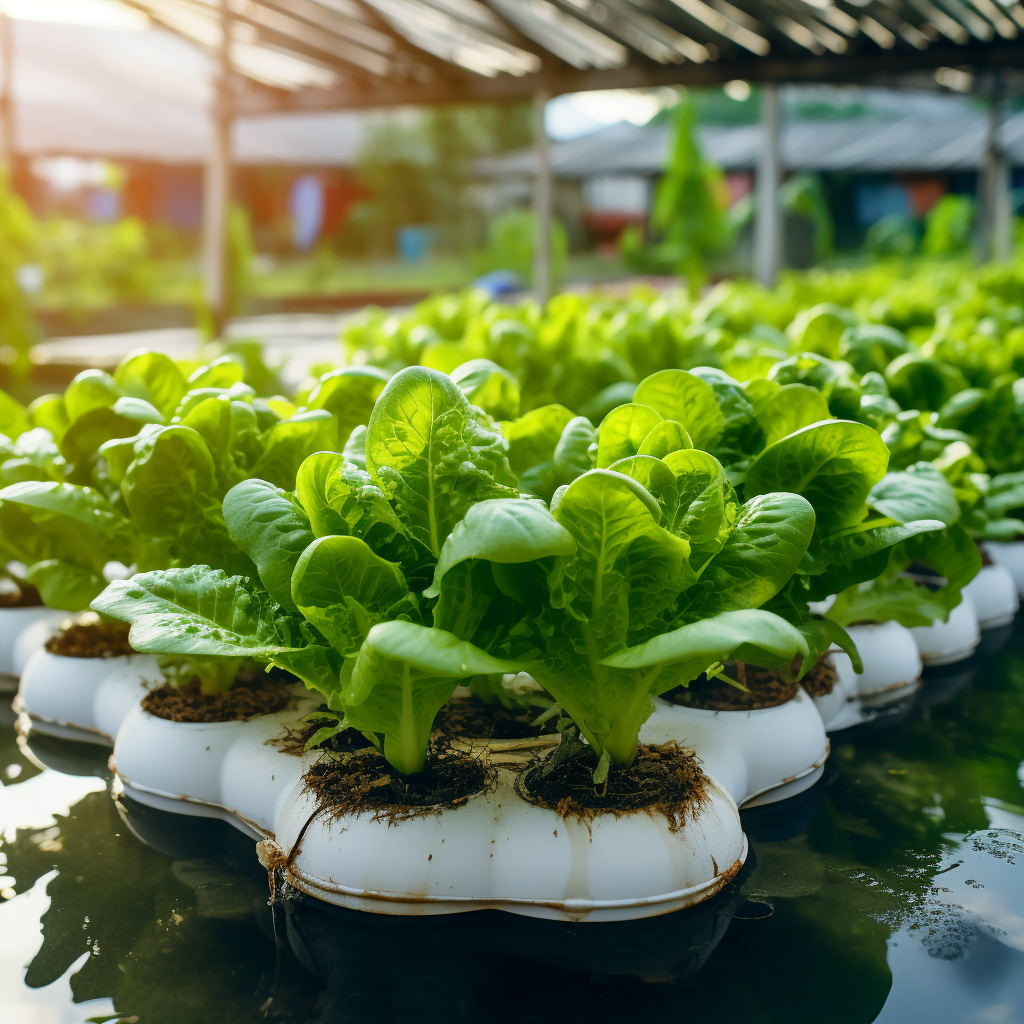
Decide On Your Hydroponic System
The type of hydroponic system you choose will depend on several factors, including the type of plants you want to grow, your budget, and your space requirements. For beginners, a simple water culture or wick system can be a good starting point. These systems are relatively easy to set up and require minimal maintenance.
Water culture systems involve suspending the plants’ roots directly in the nutrient solution, while wick systems use a wick to draw the solution up to the roots. Both systems are passive, meaning they don’t require electricity or complex equipment. They are also cost-effective and can be set up using readily available materials.
As you gain experience and confidence, you can explore more advanced systems like ebb and flow, NFT, or aeroponics. These systems offer greater control over nutrient delivery and oxygenation, but they may require more specialized equipment and monitoring.
Essential Supplies for Hydroponic Gardening
To set up your hydroponic garden, you’ll need the following supplies:
- A hydroponic system: This could be a pre-made system or one you build yourself. Pre-made systems are available in various sizes and configurations, making them convenient for beginners. If you prefer to build your own system, there are numerous online resources and tutorials to guide you.
- A grow light: Plants need light for photosynthesis. Indoor gardeners often use LED grow lights because they provide the full spectrum of light that plants need for optimal growth. Look for grow lights specifically designed for hydroponic gardening, as they often come with features like adjustable spectrum and intensity.
- A grow medium: This is the material in which your plants will grow. It provides support for the plants’ roots and helps retain moisture and nutrients. There are various options available, including rockwool, coconut coir, perlite, vermiculite, and expanded clay pebbles (hydroton). Each medium has its own characteristics and suitability for different types of hydroponic systems.
- A nutrient solution: This is the key component of hydroponic gardening, as it provides the essential nutrients that plants need to grow. There are different types of nutrient solutions available, ranging from pre-mixed solutions to concentrated formulas that you mix yourself. Consider using a balanced nutrient solution specifically formulated for hydroponic gardening, such as General Hydroponics Flora series or Dyna-Gro. These solutions contain all the essential macro and micronutrients needed for healthy plant growth.
- A pH meter: Maintaining the correct pH level is crucial for nutrient absorption and overall plant health. A pH meter allows you to measure the acidity or alkalinity of your nutrient solution. Aim for a pH range of 5.5 to 6.5 for most plants. If the pH is too high or too low, it can lead to nutrient deficiencies or toxicities. Regularly check and adjust the pH of your nutrient solution to ensure optimal nutrient uptake by your plants.
- pH up and pH down solutions: These solutions are used to adjust the pH of your nutrient solution. pH up is used to raise the pH if it’s too low, while pH down is used to lower the pH if it’s too high. Add these solutions incrementally, following the manufacturer’s instructions and retesting the pH until you reach the desired range.
Before purchasing your supplies, consider the size of your hydroponic system, the number of plants you plan to grow, and your budget. It’s also a good idea to research and compare different products to find the ones that best suit your needs.
Choose A Light Source
Proper lighting is crucial for hydroponic gardening, as it serves as a substitute for natural sunlight. Plants need light for photosynthesis, the process by which they convert light energy into chemical energy to fuel their growth.
When choosing a grow light, consider the following factors:
- Light intensity: Different plants have different light requirements. Leafy greens generally require lower light intensities, while fruiting plants need higher intensities. Look for lights that provide the appropriate intensity for the plants you want to grow.
- Light spectrum: Plants require different wavelengths of light for different stages of growth. Full-spectrum LED grow lights are a popular choice because they provide a wide range of light wavelengths, including those necessary for both vegetative growth and flowering.
- Coverage area: Consider the size of your hydroponic system and the number of plants you plan to grow. Choose a grow light that can adequately cover the entire area and provide uniform light distribution.
- Energy efficiency: LED grow lights are known for their energy efficiency, as they consume less electricity compared to traditional lighting options like fluorescent or high-pressure sodium (HPS) lights. This can result in significant energy savings over time.
It’s important to position your grow light at the appropriate distance from your plants to ensure optimal light absorption without causing heat stress or light burn. Follow the manufacturer’s guidelines for the recommended distance based on the light intensity and the growth stage of your plants.
Choose A Hydroponic Grow Medium
The grow medium is the material in which your plants will grow. It provides support for the plants, helps retain moisture and nutrients, and allows for proper root development and oxygenation.
There are several types of grow mediums to choose from, each with its own advantages and considerations:
- Rockwool: Made from molten rock spun into fibers, rockwool cubes or slabs are a popular choice for hydroponic gardening. They provide excellent water retention and aeration, making them suitable for a wide range of plants. Rockwool is sterile and pH neutral, but it requires pre-soaking and careful pH adjustment before use.
- Coconut Coir: Derived from the fibrous husk of coconuts, coconut coir is a sustainable and renewable grow medium. It has excellent water retention and aeration properties, allowing for optimal root development. Coconut coir is also pH neutral and naturally resistant to diseases and pests. However, it may require additional nutrients as it has a relatively low nutrient content.
- Perlite and Vermiculite: These lightweight, porous materials are often used as additives in soilless mixes or as standalone grow mediums. They provide good aeration and drainage, preventing waterlogging and root rot. Perlite and vermiculite are inert and pH neutral, but they don’t retain water as well as other mediums and may require more frequent watering.
- Expanded Clay Pebbles (Hydroton): These lightweight, clay-based pebbles are highly porous and provide excellent aeration and drainage. They are pH neutral and reusable, making them a popular choice for hydroponic systems. Expanded clay pebbles are ideal for flood and drain systems, NFT, and aeroponics.
Consider the specific requirements of your chosen hydroponic system and the type of plants you want to grow when selecting a grow medium. Some systems, like NFT or aeroponics, may require a more lightweight and porous medium like expanded clay pebbles, while others, like water culture or wick systems, can accommodate a wider range of mediums.
Purchase Hydroponic Nutrients & Supplements
Plants grown in hydroponic systems rely on nutrient solutions for their essential mineral requirements. Unlike soil gardening, where nutrients are naturally present in the soil, hydroponic plants depend on you to provide the necessary nutrients in the right proportions.
There are different types of nutrient solutions available, ranging from pre-mixed solutions to concentrated formulas that you mix yourself. Consider using a balanced nutrient solution specifically formulated for hydroponic gardening, such as General Hydroponics Flora series or Dyna-Gro. These solutions contain all the essential macro and micronutrients needed for healthy plant growth.
When selecting a nutrient solution, consider the following factors:
- Nutrient ratios: Different plants have different nutrient requirements. Look for nutrient solutions that provide the appropriate ratios of nitrogen (N), phosphorus (P), and potassium (K), as well as secondary and micronutrients. Most nutrient solutions will have a label indicating the N-P-K ratio, such as 3-2-6.
- Growth stages: Plants have specific nutrient needs during different growth stages. Look for nutrient solutions that provide formulations for both vegetative growth and blooming or fruiting stages. This ensures that your plants receive the right nutrients at the right time.
- Concentration: Nutrient solutions come in different concentrations, such as 1-part, 2-part, or 3-part systems. 1-part solutions are pre-mixed and ready to use, while 2-part and 3-part systems require you to mix multiple components together. Choose a concentration that matches your level of experience and desired level of control.
It’s important to follow the manufacturer’s instructions when mixing and diluting your nutrient solution. Overdosing or underdosing can lead to nutrient imbalances and negatively affect plant health and growth. Monitor your plants closely for any signs of nutrient deficiencies or toxicities, and adjust the nutrient solution accordingly.
In addition to your nutrient solution, you may also want to consider supplements to enhance plant growth and health. These can include things like calcium and magnesium supplements, which can help prevent nutrient deficiencies and improve overall plant vigor. However, supplements are not always necessary, especially if you are using a high-quality nutrient solution that provides a balanced range of nutrients.
Purchase A pH Meter & pH Up/Down
Maintaining the correct pH level in your nutrient solution is crucial for plant health. If the pH is too high or too low, it can lead to nutrient lockout, a condition where your plants are unable to absorb the nutrients they need. This can result in stunted growth, nutrient deficiencies, or even plant death.
You can measure the pH of your nutrient solution using an electronic pH meter, test strips, or a liquid kit. Electronic pH meters are the most accurate option and provide real-time pH readings, while test strips and liquid kits are more affordable alternatives. Choose a method that suits your budget and level of precision.
To adjust the pH of your nutrient solution, you will need pH up (to raise the pH) and pH down (to lower the pH) solutions. These solutions are typically acidic or alkaline substances that can modify the pH of your nutrient solution. Add these solutions incrementally, following the manufacturer’s instructions and retesting the pH until you reach the desired range.
It’s important to regularly monitor and adjust the pH of your nutrient solution, as pH fluctuations can occur due to factors like nutrient uptake, evaporation, and chemical reactions within the system. Aim for a pH range of 5.5 to 6.5 for most plants, as this is the optimal range for nutrient availability and uptake.
Mix & Add Nutrients, Start Your System
Once you’ve gathered all your supplies, it’s time to set up your system. Follow these steps to get your hydroponic garden up and running:
- Prepare your nutrient solution according to the instructions provided by the manufacturer. Mix the required amount of nutrients with water, following the recommended dilution ratio.
- Use your pH meter to measure the pH of the nutrient solution. Adjust the pH as needed using pH up or pH down solutions, following the manufacturer’s instructions. Aim for a pH range of 5.5 to 6.5 for most plants.
- Fill your hydroponic system with the nutrient solution. Ensure that the roots of your plants are fully submerged or in contact with the solution, depending on the type of system you’re using.
- Set up your grow light at the appropriate distance from your plants, considering the light intensity and the growth stage of your plants. Follow the manufacturer’s guidelines for the recommended distance.
- Set the light timer to provide the appropriate light cycle for your plants. Most plants require around 14 to 16 hours of light per day during the vegetative stage and 10 to 12 hours during the blooming stage.
- Monitor your plants closely for any signs of stress, nutrient deficiencies, or pests. Adjust the nutrient solution, pH, and lighting as needed to ensure optimal plant health and growth.
It’s important to note that hydroponic systems require regular maintenance to ensure the health and productivity of your plants. This includes monitoring the nutrient solution’s pH and nutrient levels, checking for signs of nutrient deficiencies or toxicities, maintaining proper lighting and temperature conditions, and ensuring adequate airflow and ventilation.
Maintaining Your Hydroponic Garden
Once your garden is set up, you’ll need to maintain it to ensure your plants stay healthy. This includes monitoring the pH of your nutrient solution, ensuring your plants are getting enough light, and checking for any signs of disease or pests.
Nutrient Solutions and pH Levels
The nutrient solution you use in your hydroponic system is crucial for plant health. It provides the nutrients your plants need to grow, and its pH level can affect how well your plants are able to absorb these nutrients.
You should check the pH level of your nutrient solution regularly using a pH meter. If the pH is too high or too low, it can lead to nutrient lockout, a condition where your plants are unable to absorb the nutrients they need. Adjust the pH of your nutrient solution using pH up or pH down solutions, following the manufacturer’s instructions.
In addition to pH, it’s important to monitor the nutrient levels in your solution. Over time, plants will consume the available nutrients, and the solution may need to be replenished or adjusted. Follow the manufacturer’s guidelines for the recommended nutrient concentration for your plants’ growth stage, and make adjustments as necessary.
Lighting and Temperature Control
Proper lighting is crucial for plant growth. Your plants need light for photosynthesis, the process they use to convert light into energy. In a hydroponic system, you’ll need to provide this light artificially.
LED grow lights are a popular choice for indoor hydroponic gardening because they are energy-efficient and provide a full spectrum of light that plants need for optimal growth. However, it’s important to consider the light intensity, spectrum, and coverage area when selecting a grow light.
During the vegetative stage, most plants require around 14 to 16 hours of light per day, while during the blooming stage, they typically need 10 to 12 hours. Adjust the light cycle accordingly using a timer to mimic the natural day-night cycle.
Temperature control is also important for optimal plant growth. Most plants thrive in temperatures between 65°F and 75°F (18°C to 24°C) during the day and slightly cooler temperatures at night. Avoid extreme temperature fluctuations, as they can stress your plants and affect their growth. Use fans or ventilation systems to maintain airflow and prevent excessive heat buildup.
Regular Maintenance and Troubleshooting
Regular maintenance of your hydroponic system can help prevent problems before they start. This includes checking the pH of your nutrient solution, ensuring your plants are getting enough light, and checking for signs of disease or pests.
If you notice any issues with your plants, such as yellowing leaves, stunted growth, or wilting, it’s important to investigate and address the problem promptly. Here are some common problems you may encounter in hydroponic gardening and possible solutions:
- Nutrient deficiencies: If your plants show signs of nutrient deficiencies, such as yellowing or discolored leaves, it may indicate a lack of specific nutrients. Adjust your nutrient solution to provide the deficient nutrient in the appropriate concentration.
- Nutrient toxicities: Excessive nutrient concentrations can lead to nutrient toxicities, causing burnt or discolored leaf tips and edges. Adjust your nutrient solution to reduce the concentration of the toxic nutrient.
- pH fluctuations: pH fluctuations can occur due to factors like nutrient uptake, evaporation, and chemical reactions within the system. Regularly monitor and adjust the pH of your nutrient solution to maintain it within the optimal range.
- Disease and pests: While hydroponic systems are generally less prone to diseases and pests compared to soil-based gardening, they are not immune. Monitor your plants closely for any signs of disease or pests, such as wilting, yellowing, or the presence of insects. Treat the issue promptly using appropriate organic or chemical methods to prevent further damage.
- Algae growth: Algae can sometimes grow in the nutrient solution or on the surface of the grow medium, especially if exposed to excessive light. To prevent algae growth, cover the nutrient solution reservoir to block light, and ensure proper ventilation and airflow to discourage moisture buildup.
Regularly inspect your hydroponic system for any signs of contamination, root rot, or equipment malfunction. Clean and sanitize your system periodically to prevent the buildup of algae, bacteria, or other pathogens. Proper maintenance and hygiene are essential for the long-term success of your hydroponic garden.
Advancing Your Hydroponic Gardening Skills
Once you’ve mastered the basics of hydroponic gardening, you might want to experiment with different types of hydroponic systems, grow a wider variety of plants, or even try growing plants from seeds instead of transplants.
Experimenting with Different Hydroponic Systems
As you gain experience with hydroponic gardening, you might want to try out different types of hydroponic systems. Each system has its own advantages and disadvantages, and what works best for you will depend on factors like your budget, the amount of space you have, and the types of plants you want to grow.
For example, if you’re interested in growing larger fruiting plants like tomatoes or peppers, you might consider transitioning from a water culture system to an ebb and flow or drip system. These systems offer greater control over nutrient delivery and can accommodate larger plants with more extensive root systems.
On the other hand, if you’re looking for a more compact and space-efficient system, you might explore vertical hydroponic systems or tower gardens. These systems allow you to grow plants vertically, maximizing your growing area and making efficient use of limited space.
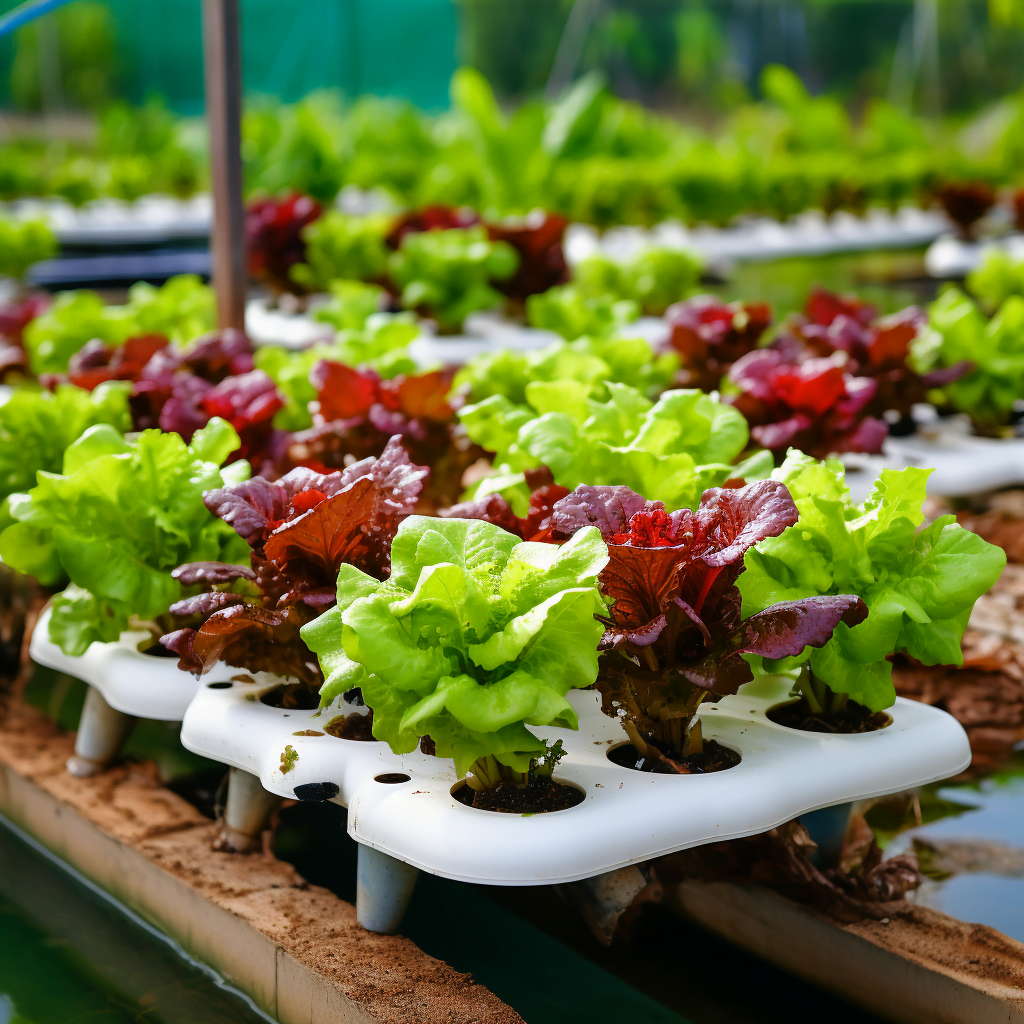
Growing a Variety of Plants
One of the great things about hydroponic gardening is that you can grow a wide variety of plants. From leafy greens like lettuce and spinach to herbs like basil and mint, the possibilities are endless. You can even grow small fruiting plants like strawberries or cherry tomatoes.
As you become more comfortable with hydroponic gardening, don’t be afraid to experiment with different plant varieties and explore new flavors and textures. Some plants may require specific growing conditions or nutrient requirements, so be sure to research and understand their needs before planting.
Consider the growth characteristics of the plants you choose, such as their light requirements, temperature preferences, and growth habits. This will help you plan your garden layout and ensure that each plant receives the appropriate care and resources.
Frequently Asked Questions
Here are some common questions about hydroponic gardening:
- How easy is it to start a hydroponic garden? Hydroponic gardening can be as simple or as complex as you make it. Starting with a basic system and a few easy-to-grow plants is a great way to get started. As you gain experience and confidence, you can expand and experiment with more advanced systems and plant varieties.
- What are the necessary components for hydroponic gardening? The necessary components for hydroponic gardening include a hydroponic system, a grow light, a grow medium, a nutrient solution, a pH meter, and pH up/down solutions. These components work together to provide the necessary environment and resources for plant growth.
- What are the best plants for hydroponic growth? Leafy greens like lettuce, spinach, and kale are excellent choices for hydroponic gardening, as they have a relatively short growth cycle and are well-suited to the controlled environment of hydroponic systems. Herbs like basil, mint, and cilantro also thrive in hydroponic systems. Additionally, small fruiting plants like cherry tomatoes and strawberries can be successfully grown in hydroponics.
- Is it possible to build your own hydroponic system? Yes, it is possible to build your own hydroponic system using readily available materials and DIY tutorials. Building your own system allows for customization and can be a cost-effective option. However, if you prefer a ready-to-use system, there are many pre-made options available on the market.
- How do hydroponic vegetables compare in taste to soil-grown vegetables? Hydroponically grown vegetables can have a similar or even superior taste compared to soil-grown vegetables. The controlled environment of hydroponic systems allows for precise control over nutrient delivery, resulting in optimal flavor and texture. Additionally, hydroponically grown vegetables are often free from soil-borne diseases and pests, further enhancing their quality.
Conclusion
Hydroponic gardening is a fun and rewarding hobby that allows you to grow your own fresh produce year-round. With a bit of planning, the right supplies, and some basic knowledge, you can set up your own hydroponic system and start growing your own plants in no time.
Whether you’re an experienced gardener looking to try something new or a beginner looking for a simple way to start growing your own food, hydroponic gardening is a great option. The benefits of hydroponics, such as space efficiency, water conservation, and faster growth, make it an attractive choice for urban gardeners, those with limited outdoor space, or anyone interested in sustainable and efficient gardening methods.
So why not give hydroponic gardening a try? With the information provided in this comprehensive guide, you have all the tools you need to get started. Start small, learn from your experiences, and enjoy the journey of growing your own fresh and nutritious produce right at home.
Have you tried hydroponic gardening? We’d love to hear about your experiences! Share your stories, tips, and challenges in the comments below. If you have any questions, feel free to ask. Happy gardening!
